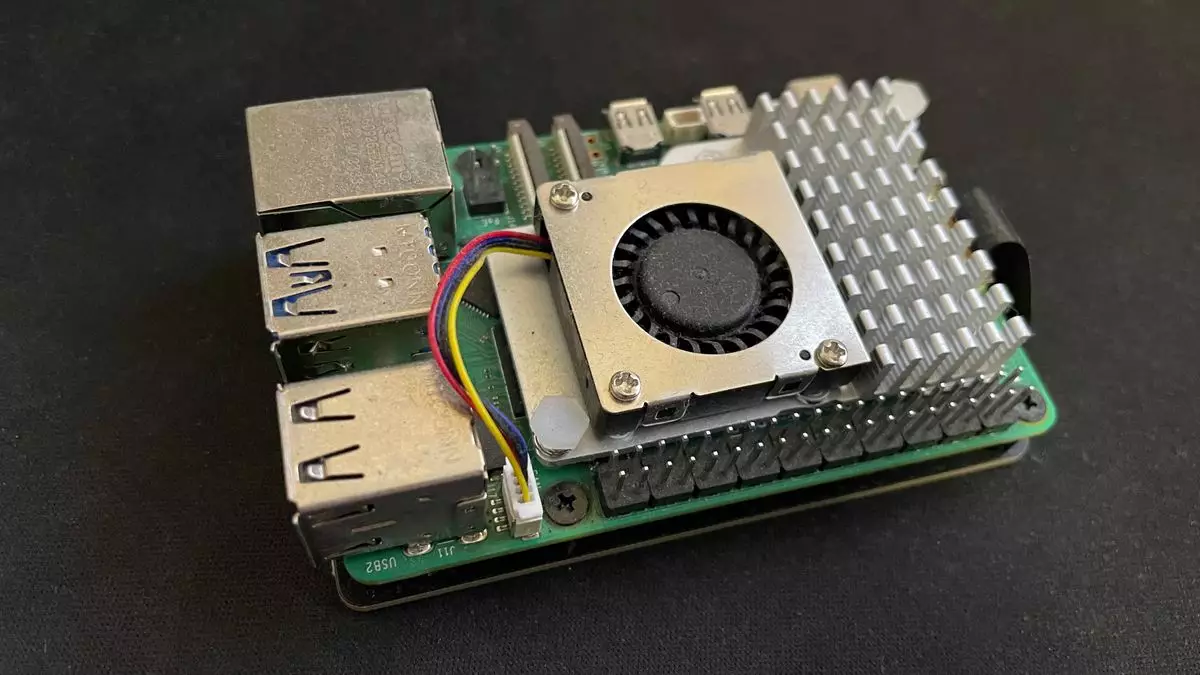The release of the Raspberry Pi 5 in 2023 was a pivotal moment for enthusiasts and developers alike, stirring excitement across the global tech community. One of the standout features that captured widespread attention was the inclusion of PCIe support, a significant leap forward, especially for those intent on leveraging the Raspberry Pi as a more competent desktop computing solution. Although initial offerings lagged in terms of SSD connectivity, recent announcements have finally paved the way for robust storage solutions that enhance the user experience.
The Raspberry Pi has long been adored for its versatility, but the 5th iteration stands apart as a genuine contender in the desktop computing arena. With an architecture that capitalizes on performance gains over its predecessor, the Raspberry Pi 4, the Pi 5 runs notably smoother, especially with practical cooling solutions. Early assessments of its capabilities for gaming suggest that it can handle classics like Doom 3 at playable framerates, albeit without the crisper graphics and loaded capabilities expected from mainstream gaming PCs. This is a testament to the impressive strides made by the Pi, yet it begs the question: how would its performance improve with a robust storage upgrade?
The historical reliance on MicroSD cards has long stifled the Raspberry Pi’s potential as a reliable everyday computer. While one can find fast MicroSD options, they often fall short of providing the stability and speed needed for demanding applications and game load times. This has left users grappling with the limitations of inbuilt storage solutions, where the hastily crafted attempts to manage performance via external tools often felt cumbersome.
The introduction of the Raspberry Pi M.2 HAT+ was a significant milestone, providing a pathway for utilizing SSDs with the Raspberry Pi 5. However, this still necessitated third-party solutions to actually secure compatible SSDs, leading users to navigate a landscape fraught with compatibility concerns and the stress of ensuring the correct components were selected. Fortunately, the recent announcement by Raspberry Pi Ltd of official SSD offerings has transformed the landscape. They’ve now made it easier than ever to enhance the Raspberry Pi’s functionality with storage options that come with guaranteed compatibility and reliability.
Diving deeper into the specs, the new SSDs are PCIe 3.0 compatible, a feature that theoretically unlocks higher data transmission speeds. Although the Raspberry Pi 5 officially operates on PCIe 2.0, the potential to overclock the system via a simple config file edit is thrilling. This level of optimization speaks highly of the design’s flexibility and encourages an engaged community willing to experiment. Such upgrades can be crucial for demanding scenarios, especially for gaming purposes or other intensive tasks.
Pricing plays a significant role in the feasibility of these upgrades. The entry-level 256GB SSD is accessible at a competitive price point of $30, while a more spacious 512GB variant starts at $45. The inclusion of full kits allows users options for greater ease of integration. While these numbers are modest relative to traditional systems, they can still strain a budget sensitive to the original appeal of low-cost computing with Raspberry Pi. However, for many users, particularly those eager to stretch the limits of their Raspberry Pi, these investments can yield impressive returns—not just in terms of performance, but also in potential applications for projects ranging from gaming to digital media libraries.
For gaming enthusiasts, the Raspberry Pi 5 now stands as a compelling platform for innovation. Whether integrating Steam on a Raspberry Pi Linux OS or opting for retro gaming systems like Recalbox or Retropie, the SSD support empowers users to enhance their gaming environments significantly. The possibilities for diverse applications mirror the spirit in which the Raspberry Pi was originally designed: flexible, innovative computing that encourages exploration.
As tech enthusiasts continue to push boundaries, we are continually reminded of the potential that lies within devices initially designed for education and experimentation. The Raspberry Pi 5, with its new SSD offerings, embodies a convergence of creativity and practicality, providing ample scope for both gaming and general computing demands. The emergence of these official solutions removes numerous barriers, marking a transformative step in broadening the appeal of the Raspberry Pi beyond mere educational use.
The Raspberry Pi 5, equipped with official SSDs, is not just another iteration in the beloved series; it’s a clarion call to enthusiasts to explore the deeper potential of small form-factor computing. As we embrace this development, who knows what groundbreaking projects and innovations will emerge? The journey of the Raspberry Pi continues, more exciting than ever.


Leave a Reply